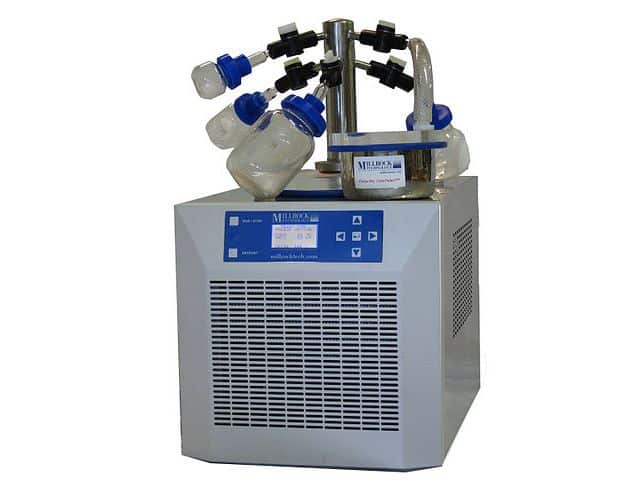
Freeze drying is a dehydration process widely used in the food industry.
Freeze drying is the act and result of freeze drying . The verb freeze-dry , meanwhile, refers to a procedure that is used when dehydrating a food or other product that is sensitive to heat .
Dehydration mechanism
Specifically, freeze-drying refers to separating the water present in a solution or substance through freezing followed by sublimation of the ice at low pressure . The result of this process is obtaining a spongy material that can dissolve easily.
Also known as cryo-drying or dehydrofreezing , freeze-drying is a dehydration mechanism. Once the food is frozen, the pressure is reduced to achieve sublimation of the ice. In this way, water goes from the solid state to the gaseous state directly, without passing through the liquid phase.
With freeze-drying, in short, water can be removed from a food . This contributes to its conservation and, in many cases, favors storage and transportation .
Origins and history
It is believed that aboriginal peoples in South America already used freeze-drying thousands of years ago. These cultures crushed food products and then placed them outdoors in the mountains. At the beginning of the 20th century , the French scientist Arsène d»Arsonval investigated and optimized the freeze-drying procedure.
A key step in the advancement of freeze-drying took place in World War II . At that time, this technique was used to preserve and transport blood serum from the United States to the European continent. Currently, freeze-drying is used in both the food sector and the pharmaceutical industry.
Procedure in the laboratory
Before describing the lyophilization procedure , we must mention that the quantity of the sample is decisive in the instruments used: in a laboratory, for example, where it is small, tubes, flasks or vials with rounded bottoms are usually used, which offer a great resistance and can be closed inside the freeze dryer; For industrial processes, however, the use of trays is necessary. Next, we will look at more details about laboratory freeze drying .
One of the most important initial stages is freezing the sample , since the quality and appearance of the final product depends on it. Generally, to carry it out, the sample is placed in liquid nitrogen at a temperature of -196 °C or in acetone and dry ice, at -78 °C , and left there until the freezing process is complete. . Next comes the time of drying by sublimation ; Throughout this phase, it is important that the appearance of the frozen products is always opaque.

A benchtop freeze dryer, used for small samples
To dry, place the sample in a container in the sublimation chamber and connect the vacuum, taking all the indicated precautions. If there are already products in full freeze-drying in this chamber, it is necessary to close the other containers before opening a new one and only reopen them all when it has reached a vacuum . At the end of the process, the vacuum must be broken, for which the air is allowed to enter little by little.
The last part of the freeze-drying procedure involves storage . Properly closing the products is essential in this step, since in many cases they spend extended periods of time stored; A failure in this aspect can result in a loss of its chemical, physical, organoleptic and biological properties . For best results, containers should be impermeable to oxygen and the storage location should be at a moderate temperature, as heat could denature the proteins.
